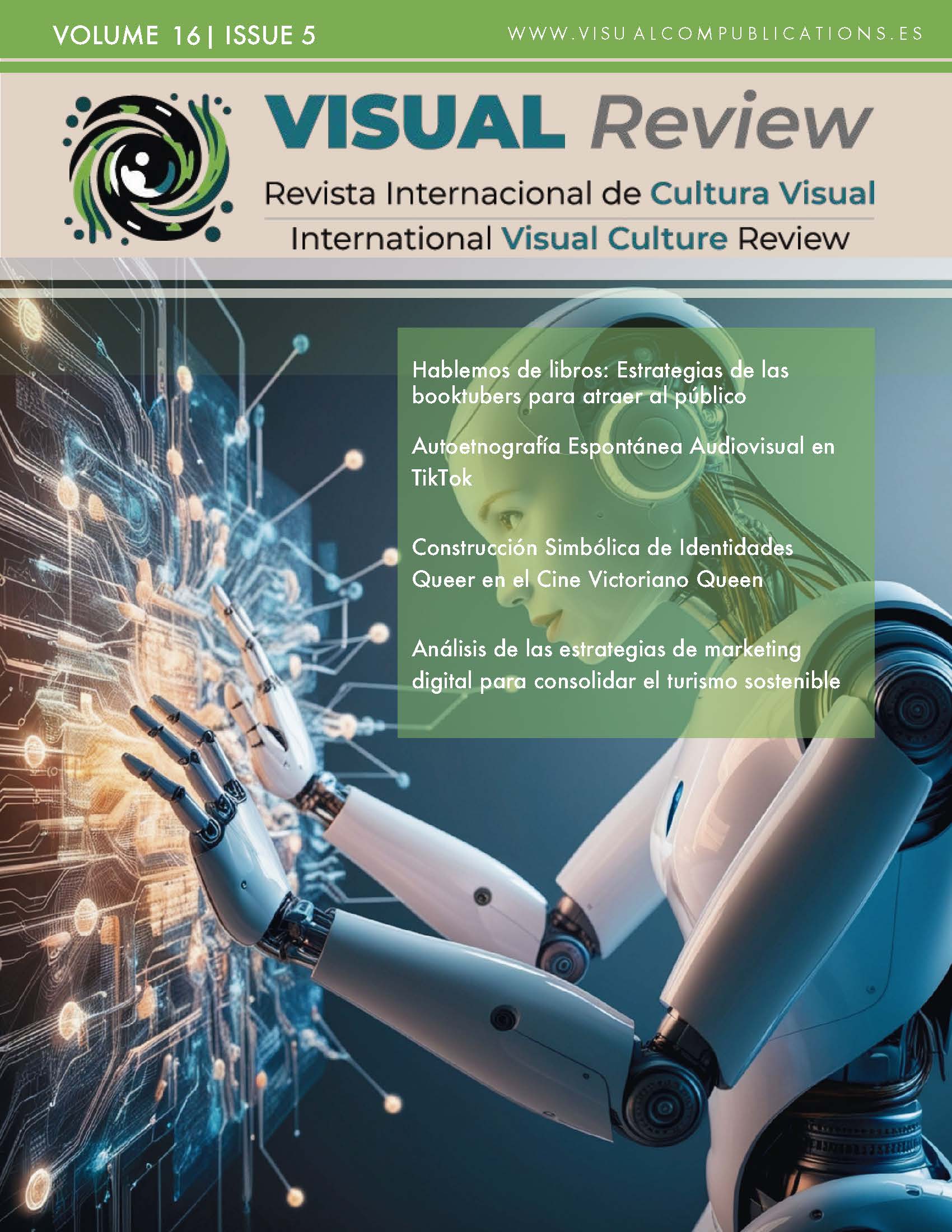“Narrar mi Ciudad” on Networks.
Communicative strategy for online socialization of a participatory audiovisual literacy project
DOI:
https://doi.org/10.62161/revvisual.v16.5287Keywords:
Participatory communication strategy, Social networks, Audiovisual literacy, Teenagers, Educational project, Heritage, Narrar mi CiudadAbstract
The article presents the communicative online socialization strategy of Narrar mi Ciudad, an audiovisual literacy project for the rediscovery of heritage resulting from the participatory diagnosis of the skills and presence in networks of its members, the contrast with theory and similar experiences. Participatory Action Research is used as a methodology and bibliographic-documentary research, survey, content analysis, group participatory techniques typical of the selected methodology and triangulation are used as techniques. The resulting strategy offers the possibility of socializing the project and meets the training objective of generating skills for the conscious use of social networks in new generations.
Downloads
Global Statistics ℹ️
|
386
Views
|
112
Downloads
|
|
498
Total
|
|
References
Arellano, E. (1998). La estrategia de comunicación como un principio de integración/interacción dentro de las organizaciones. Razón y palabra, enero- marzo, Vol. 3, [Edición especial]. http://www.razonypalabra.org.mx/anteriores/supesp/estrategia.htm
Certeau, M. de. (1980). La invención de lo cotidiano. Universidad Iberoamericana.
Freire, P. (1970). Pedagogía del Oprimido. Siglo XXI Editores.
Gumucio-Dagron, A. (2011). Comunicación para el cambio social: clave del desarrollo participativo. Signo y Pensamiento 58. Eje Temático. pp 26-39. volumen XXX. enero - junio 2011.
Habermas, J. (1984). The Theory of Communicative Action: Reason and the Rationalization of Society. Beacon Press.
ICAA, (2024) Proyectos de Alfabetización Audioviovisual https://www.cultura.gob.es/cultura/areas/cine/datos/directorio-cine/educacion.html
Jara Holliday, O. (2018) Orientaciones teórico-prácticas para la sistematización de experiencias: práctica y teoría para otros mundos políticos – 1ed. Bogotá: Centro Internacional de Educación y Desarrollo Humano - CINDE, 2018. 258 pp. Primera edición, Colombia
Jenkins, H. (2006). Convergence Culture: Where Old and New Media Collide. NYU Press.
Jenkins, H., Ford, S., & Green, J. (2016). Cultura transmedia: La creación de contenido y valor en una cultura en red. Gedisa.
MCU (2013) Proyectos de Alfabetización Audiovisual http://www.mcu.es/gabineteprensa/notas/34322013/alfabetizacion280613.pdf
Obregón, R. (2009). Comunicación, desarrollo y cambio social. Recuperado de www.portalcomunicacion.com/eps/n_aab_lec_pdf.asp?id_llico=49
Qustodio (2023). Nacer en la era digital. Informe Anual. https://static.qustodio.com/public-site/uploads/2024/01/19122643/ADR_2023-24_ES.pdf
Rheingold, H. (2012). Net Smart: How to Thrive Online. MIT Press.
Rincón, O. (2011). Nuevas narrativas televisivas: relajar, entretener, contar, ciudadanizar, experimentar. Comunicar, nº 36, v. XVIII, 2011, Revista Científica de Educomunicación; 43-50p. Recuperado de : www.revistacomunicar.com DOI: https://doi.org/10.3916/C36-2011-02-04
Saladrigas Medina, Hilda: (S/A). Investigación y estrategias. Relación de concomitancia en la comunicación persuasiva. Facultad de Comunicación, Universidad de La Habana.
Scolari, C. A. (2010). Ecologia dels mitjans. Mapa d’un nínxol teòric, Quaderns del CAC, Nº 34, Vol XIII.
Servaes, J. (2008). Communication for Development and Social Change. Unesco. DOI: https://doi.org/10.4135/9788132108474
Fundación Rockefeller (1999). Comunicación para el cambio social. New York, Fundación Rockefeller. 56 p. (Documento programático e Informe sobre una Conferencia).
Downloads
Published
How to Cite
Issue
Section
License
Copyright (c) 2024 VISUAL REVIEW. International Visual Culture Review / Revista Internacional de Cultura Visual

This work is licensed under a Creative Commons Attribution-NoDerivatives 4.0 International License.
Those authors who publish in this journal accept the following terms:
-
Authors retain copyright.
-
Authors transfer to the journal the right of first publication. The journal also owns the publishing rights.
-
All published contents are governed by an Attribution-NoDerivatives 4.0 International License.
Access the informative version and legal text of the license. By virtue of this, third parties are allowed to use what is published as long as they mention the authorship of the work and the first publication in this journal. If you transform the material, you may not distribute the modified work. -
Authors may make other independent and additional contractual arrangements for non-exclusive distribution of the version of the article published in this journal (e.g., inclusion in an institutional repository or publication in a book) as long as they clearly indicate that the work was first published in this journal.
- Authors are allowed and recommended to publish their work on the Internet (for example on institutional and personal websites), following the publication of, and referencing the journal, as this could lead to constructive exchanges and a more extensive and quick circulation of published works (see The Effect of Open Access).













